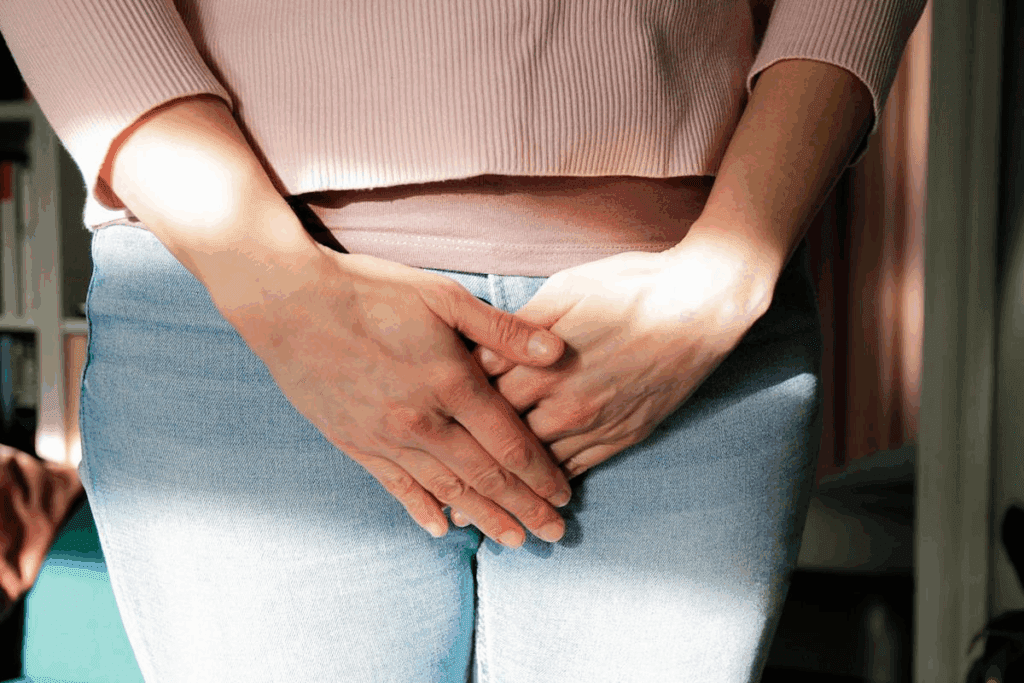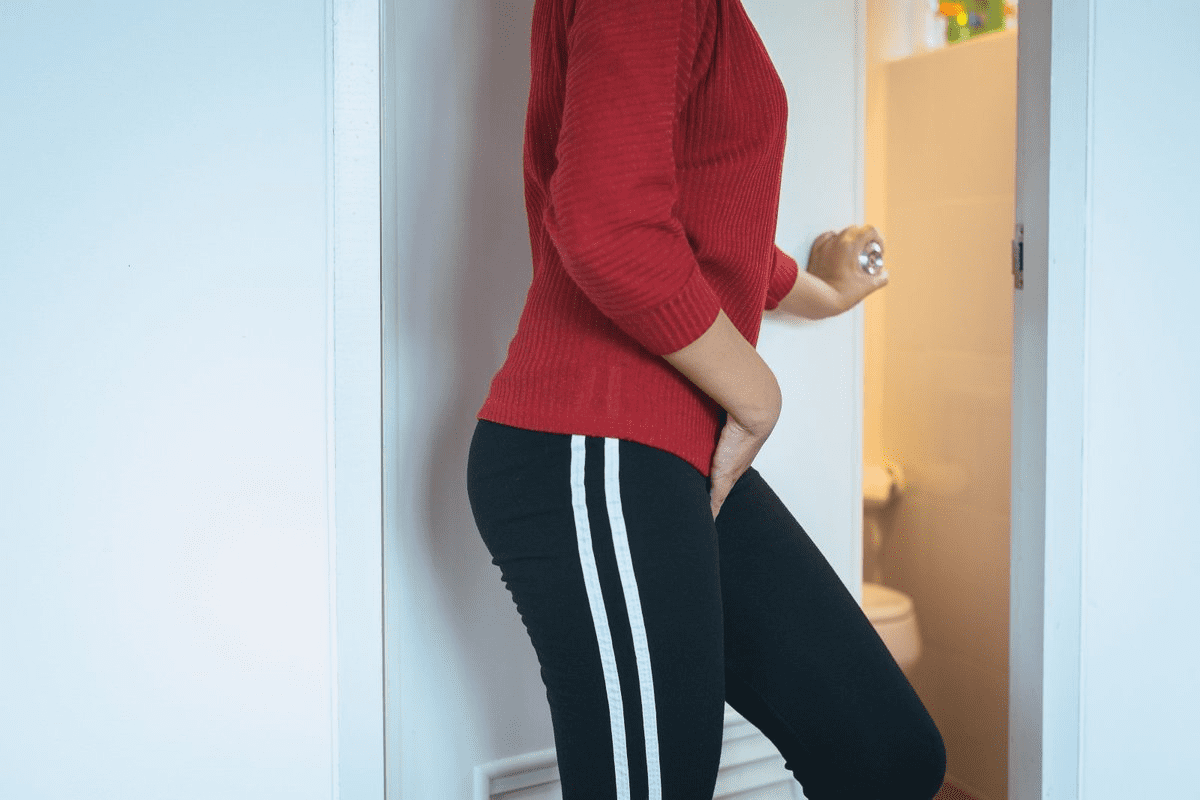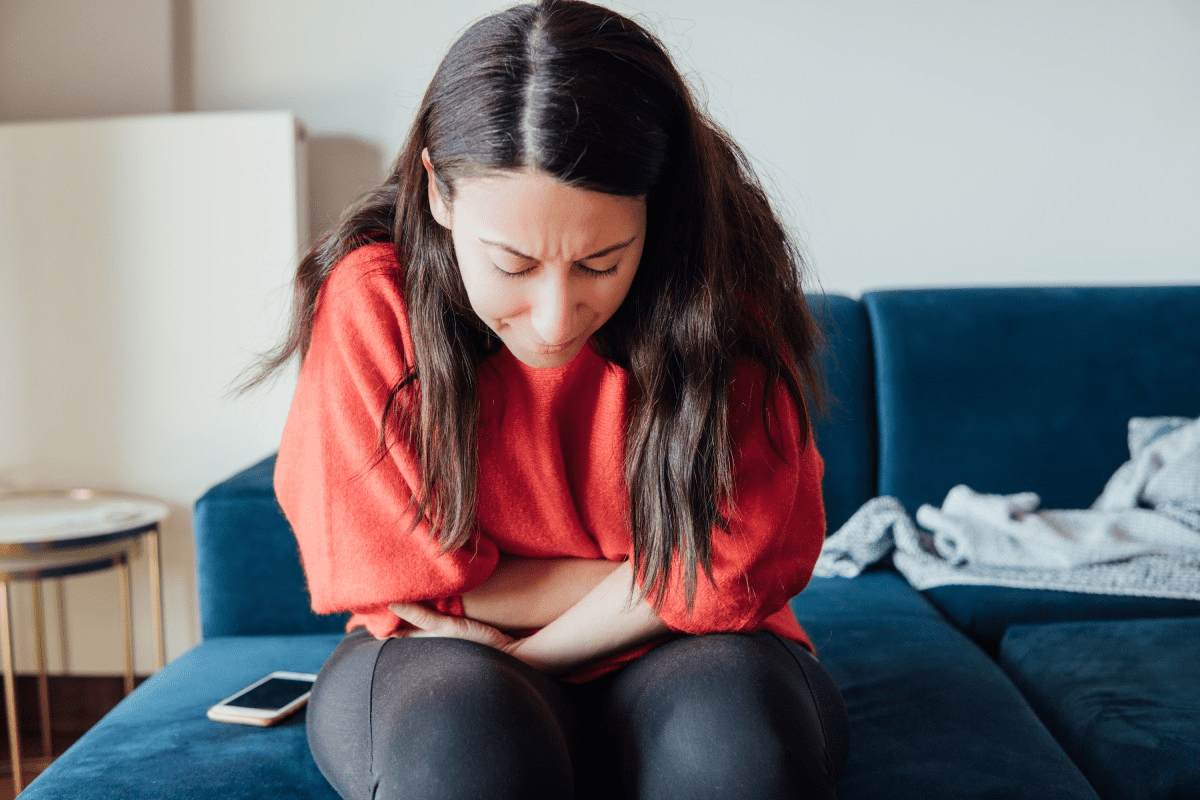Bladder stones are a common problem for women, leading to pain and discomfort. It’s important to know the symptoms and causes. This knowledge helps in getting the right treatment.

It’s important to know how bladder stones form to understand their causes and symptoms. These stones are hard masses made of minerals in the bladder. They often happen because of urine retention and the presence of foreign bodies.
What are the symptoms of bladder stones in women? Get a complete guide to the unique signs, causes, and treatment options.
The formation of bladder stones starts with minerals like calcium oxalate and uric acid in urine. When urine gets concentrated, these minerals can turn into stones. Urinary retention is key because it lets minerals settle and build up in the bladder.
Several things can cause urinary retention in women, raising the risk of bladder stones. These include:
Mineral deposits in urine can turn into stones if they’re not flushed out. Factors that help this process include:
Factor | Description |
Concentrated Urine | High concentration of minerals |
Urinary Retention | Allows minerals to settle and accumulate |
Presence of Foreign Bodies | Can act as a nidus for stone formation |
Understanding these factors helps us see how bladder stones form. It also shows why we need to tackle the root causes to stop them from forming.
Can You Get Stones in Your Bladder? Prevalence and Risk Factors
Bladder stones are not very common but can be very painful. They can happen to anyone, but some factors make it more likely for women to get them.
Studies show that bladder stones are more common in men than women. This is because of differences in body structure and hormones. Yet, some conditions can raise the risk for women.
Urinary tract infections, bladder blockages, and neurogenic bladder are big risk factors. Hormonal shifts, like those during pregnancy or menopause, also play a role.
Symptoms of bladder stones include sharp pain in the lower belly, trouble peeing, and needing to pee a lot. Sometimes, there’s blood in the urine. Doctors use X-rays, ultrasound, or CT scans to find the stones.
Women with a history of urinary problems or other risk factors should watch for these signs. If they notice any, they should see a doctor right away.
To avoid bladder stones, drink plenty of water, keep clean, and manage health issues. Treatment depends on the cause and might include surgery.
Knowing the risks and symptoms helps women prevent bladder stones. If they do happen, getting medical help quickly is key.

Bladder stones can happen to anyone, but women face unique factors that increase their risk. Certain health conditions and complications are more common in women. These can lead to the formation of bladder stones.
Surgeries, like those using sutures or synthetic mesh, can sometimes cause problems. These problems can raise the risk of bladder stones. For example, if these materials move into the bladder, they can help stones form.
It’s important to understand how surgery can lead to bladder stones. Studies show that foreign bodies, like sutures or mesh, can cause stones. This is because they irritate and inflame the bladder.
Cystocele is when the bladder bulges into the vagina because of weak tissues. This can lead to bladder stones. The weakness can cause urine to stay in the bladder, making it a perfect place for stones to form.
The link between cystocele and bladder stones shows why fixing anatomical problems is key. Women with cystocele might not empty their bladder fully. This can increase their risk of getting stones.
Women have unique anatomy that can affect bladder stones. For example, their shorter urethra and specific pelvic structures can change how urine flows. This can make it easier for stones to form.
Anatomical Factor | Impact on Bladder Stone Formation |
Sutures/Synthetic Mesh | Acts as a nidus for stone formation due to irritation and inflammation |
Cystocele | Leads to urinary retention and stasis, increasing the risk of stone formation |
Pelvic Structure | Influences urinary flow and retention, potentially contributing to stone formation |
Knowing these unique causes helps doctors better treat bladder stones in women. It’s vital to consider these factors when treating patients. This ensures they get the right care.

It’s important for women to know the signs of bladder stones early. These stones can cause many urinary and pelvic symptoms. They can really affect a woman’s life quality.
Women with bladder stones might feel painful or burning urination, frequent urination, and persistent lower abdominal pain. These symptoms can get worse over time.
Some women might also notice cloudy or dark-colored urine. This could mean they have bladder stones. Spotting these signs early is key to getting help.
As bladder stones grow or get stuck, symptoms can get worse. Women might feel increased pain during urination, interrupted urine flow, or painful urination that gets worse.
Bladder stones can also lead to urinary tract infections (UTIs) or chronic bladder inflammation. Knowing how symptoms change is important for getting help on time.
Symptom | Description | Severity |
Painful Urination | Burning sensation while urinating | Mild to Severe |
Frequent Urination | Need to urinate more often than usual | Mild to Moderate |
Lower Abdominal Pain | Persistent pain in the lower abdomen | Moderate to Severe |
Some bladder stones don’t show symptoms until they grow or block something. These “silent stones” can be hard to find until problems start.
Going to regular check-ups and knowing the risks can help find and prevent bladder stone problems.
Understanding the pain patterns of bladder stones is key to diagnosing and treating them. These stones can cause different types of pain, varying in where and how intense they are.
Lower abdominal and pelvic pain are common with bladder stones. This discomfort can feel like a dull ache or sharp pains. It might be constant or come and go, getting worse if not treated.
Women often feel this pain in their lower abdomen or pelvis. It can be mistaken for menstrual cramps or urinary tract infections. It’s important to notice how long and how bad the pain is.
Pain while urinating is another symptom women with bladder stones may have. This pain can feel sharp or like a burning sensation, often in the urethra or bladder. It can make peeing painful and uncomfortable.
This pain usually happens because the stone irritates the bladder wall or blocks urine flow. Sometimes, the pain spreads to the lower abdomen or pelvis, making it even more uncomfortable.
Some women feel pain or discomfort in their lower stomach after they pee. This pain can be a dull ache or a feeling of pressure. It might happen because the bladder can’t fully empty due to the stone.
This pain after peeing can be worrying and may make you wonder if your bladder is emptying properly. It’s a sign that needs medical attention to find out the cause and how to treat it.
Urinary symptoms from bladder stones can really upset women, making daily life hard. It’s key to spot these signs early for the right care.
Dysuria, or painful urination, is a common sign of bladder stones. It can feel like a mild burn or sharp pain in the urethra or bladder. This happens because the stone irritates the bladder or blocks urine flow.
Table 1: Characteristics of Dysuria in Bladder Stones
Characteristics | Description |
Pain Location | Urethra or bladder area |
Pain Severity | Mild to severe |
Triggers | Urination |
Women with bladder stones often pee more than usual. They might also wake up to pee at night, known as nocturia. These issues happen because the stone makes the bladder feel full, even when it’s not.
Some women find it hard to empty their bladder fully because of bladder stones. This is called urinary retention. It’s caused by the stone blocking urine flow, making it hard to fully pee out.
Knowing these symptoms is key to spotting bladder stones. If you’re experiencing any, see a doctor for the right help.
Bladder stones can change how urine looks. They can irritate the bladder and lead to infections. These infections can make urine look different.
Cloudy or dark urine might mean you have bladder stones. This color change could be from an infection or the stones themselves. Urinary tract infections (UTIs) are common with bladder stones and can make urine look cloudy or darker.
Blood in the urine is a big sign of bladder stones. The stones can hurt the bladder wall, causing bleeding. This can make urine look pink, red, or brown.
If you see blood in your urine, get medical help right away. It could mean several things, including bladder stones.
Bladder stones can also cause crystals in urine. These crystals can tell doctors what kind of stones you have. They can help figure out why you have stones, like if it’s because of your diet or health.
Urine Characteristic | Possible Cause | Clinical Significance |
Cloudy or Dark-Colored | Infection, Presence of Stones | May indicate UTI or bladder stone complication |
Blood in Urine (Hematuria) | Bleeding due to Stone Irritation | Requires medical evaluation to rule out other conditions |
Presence of Crystals | Composition of Bladder Stones | Can inform diagnosis and treatment planning |
Changes in urine, like cloudiness, blood, or crystals, are important signs of bladder stones. If you see these changes, see a doctor to get checked and treated.
Unique Symptoms in Women’s Reproductive and Pelvic Health
Bladder stones can cause a lot of problems for women. One big issue is pain during intimacy. This pain comes from the stones irritating or blocking the bladder.
Bladder stones can make sex painful. The pain can be mild or very severe. Women might feel sharp pains or a dull ache, which can be upsetting and hurt their relationships.
Bladder stones can also mess with menstrual cycles. Women might see changes in their period, like heavier or lighter bleeding. These changes happen because the body reacts to the stones.
The pelvic floor muscles help hold the bladder and other organs in place. Stones can put strain on these muscles, leading to problems. Symptoms include urinary incontinence and pelvic pain.
It’s important to know the symptoms of bladder stones. Women with these symptoms should see a doctor for help. This way, they can get the right treatment.
By understanding bladder stones’ effects on women’s health, we can improve care. Education and awareness help women take charge of their health. They can get the medical help they need.
Bladder stones, also known as vesical calculi, are hard masses of minerals that form in the bladder. They can cause severe pain, difficulty urinating, and other complications if left untreated. Symptoms include painful urination, frequent urination, and blood in the urine.
If you’re experiencing any of these symptoms, it’s essential to seek medical attention. This is to prevent further complications and ensure proper treatment.
If you’re feeling severe pain or having trouble urinating, you should get medical help. We’ve talked about how to spot bladder stone symptoms, what causes them, and when to see a doctor.
Being proactive about your health is key. If you notice any unusual signs, don’t hesitate to reach out to your healthcare provider. They can guide you on the right treatment for your situation.
Women with bladder stones may feel severe lower abdominal pain. They might also need to urinate more often and have trouble emptying their bladder. Some may notice cloudy or dark urine, and in severe cases, blood in the urine.
Several factors can lead to bladder stones in women, including urinary retention, mineral deposits, and certain medical conditions. Women with a history of kidney stones or urinary tract infections are at higher risk.
Doctors use imaging tests like X-rays, CT scans, or ultrasound to find bladder stones. They also perform physical exams and review medical histories to confirm the diagnosis.
Treatment varies based on the stone’s size, location, and the person’s overall health. Options include surgery to remove the stones, medication to dissolve them, or lifestyle changes to prevent recurrence.
Yes. Drinking plenty of water, avoiding certain foods, and managing underlying health conditions can help prevent bladder stones.
Bladder stones can cause pain and discomfort, make it hard to urinate, and, if left untreated, may lead to infections or kidney damage.
Risk factors include family history, certain medical conditions, and a diet high in animal protein or salt.
Small bladder stones may be treated with medication or non-surgical methods, but larger or symptomatic stones usually require surgery.
Drinking plenty of water, eating a healthy diet, and managing health conditions can lower the risk. Avoiding foods high in oxalate or salt is also beneficial.
Untreated bladder stones can lead to chronic kidney disease, recurring urinary tract infections, and kidney damage. Early treatment helps prevent these complications.
Yes. Bladder stones can indicate an underlying condition like a urinary tract infection or metabolic disorder. Persistent or worsening symptoms should be evaluated by a doctor.
Management involves lifestyle changes, dietary adjustments, and medical treatment. Working with a healthcare provider can help create a plan to prevent recurrence and manage symptoms.
National Center for Biotechnology Information, Symptoms of Bladder Stones https://www.ncbi.nlm.nih.gov/books/NBK441944/[2
Subscribe to our e-newsletter to stay informed about the latest innovations in the world of health and exclusive offers!
WhatsApp us